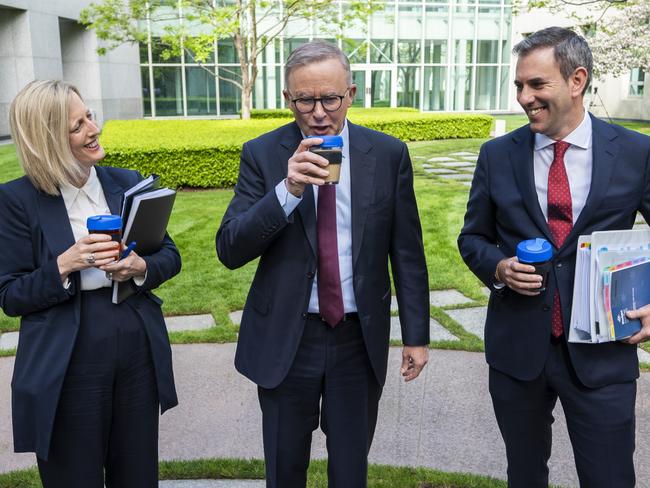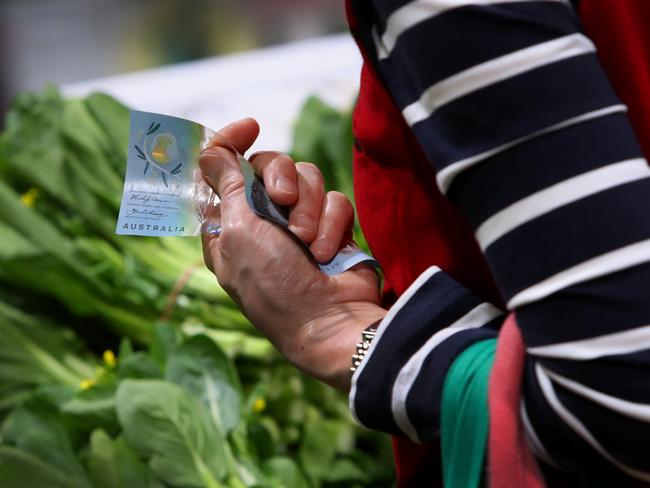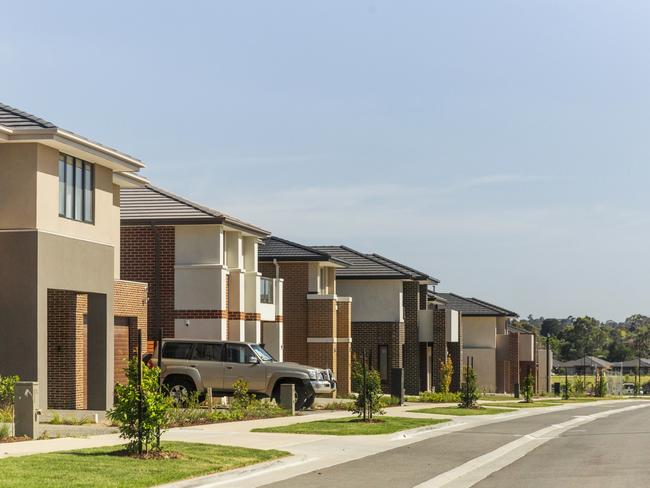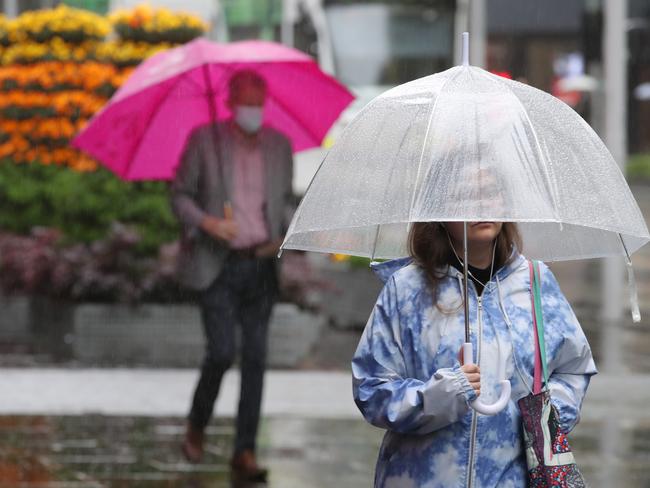Everything in the October 2022 federal budget
Anthony Albanese is splashing the cash on “responsible” cost-of-living measures, despite warnings of global doom-and-gloom.
Fed Budget
Don't miss out on the headlines from Fed Budget. Followed categories will be added to My News.
Prime Minister Anthony Albanese and Treasurer Jim Chalmers have handed down their first budget in the face of soaring inflation and a dark outlook for the global economy.
Despite a boost to the bottom line of more than $40 billion off the back of higher commodity prices and more than $21 billion in spending cuts, Dr Chalmers warns the October budget comes at “a time of great challenge and change”.
“It recognises that our best defence against uncertainty around the world is responsible economic management here at home,” the Treasurer said in his speech on Tuesday night.
“We now confront the prospect of a third global downturn in a decade-and-a-half. This time not a financial crisis or a pandemic, but a war driving high prices and higher interest rates here and around the world, and the risk of another global recession.”
Dr Chalmers had previously warned Australians to brace for even higher grocery prices following the devastating floods, saying the government wanted to avoid providing cost-of-living relief “in a way that just creates more inflation and pushes interest rates up higher than they would otherwise be”.
Instead, Labor has unveiled a “five-point plan” to address cost-of-living via cheaper childcare, expanding paid parental leave, cheaper medicines, more affordable housing and “getting wages moving again”.
“This is a $7.5 billion package that helps put some money back in people’s pockets, boosts productivity and grows the economy — but it’s carefully targeted and carefully timed, so that it avoids placing additional pressure on inflation,” Dr Chalmers said.
The Treasurer blamed the former government for leaving Australia with a “wasted decade marked by energy chaos, a crisis in aged care, skills shortages and stagnant wages, and not enough to show for a trillion dollars in debt”.
“Australians know there are hard days to come, and hard decisions to accompany them,” he said.

Budget overview
• Labor delivers its first budget amid soaring inflation, global recession fears
• “A solid and sensible budget — suited to the conditions,” Treasurer Jim Chalmers says
• Budget address a “blunt and brutal” economic landscape focusing on inflation, the world economy and spending pressures
• Three goals are “responsible, not reckless” cost-of-living relief, investment in a “stronger, more resilient, more modern economy” and beginning the “hard yards of budget repair”
• Tuesday’s budget trims the deficit by $41.1 billion to $36.9 billion compared with March’s forecast, driven by high commodity prices, but government warns boost will be short-lived
• National debt sitting at $1 trillion, “which is getting more and more expensive to service”, Dr Chalmers says, with interest payments set to rise by 14 per cent per year
• Annual inflation rose to 6.1 per cent in the June quarter, with the RBA forecasting CPI to peak at 7.75 per cent in 2022 before moderating to 3.5 per cent through 2023-24
• RBA has raised the official cash rate for six consecutive months to 2.6 per cent
• Wages growth rose to 2.6 per cent in the year to June, the highest annual rate since September 2014, but still well below inflation
• Dr Chalmers says real wages are expected to start growing again in 2024
• Unemployment rose to 3.5 per cent in August, and is tipped to hit 4.5 per cent in 2023-24 and 2024-25
• GDP is forecast to grow by 3.25 per cent over 2022 before slowing to 1.5 per cent in 2023-24, a full percentage point downgrade from March’s forecast
• Budget was not expected to focus on major reforms, but instead lay the foundations for a more substantial May 2023 budget.
Taxes
• No changes to the former government’s stage three tax cuts, which will scrap the 37 per cent marginal tax bracket and lower the 32.5 per cent marginal tax rate to 30 per cent from 2024-25
• Australia Institute analysis shows high-income earners making more than $200,000 will receive a tax break of $9075 per year under the changes, which are estimated to cost the budget $243 billion in lost revenue over a decade
• Around 600,000 people earning over $200,000 will get the full $9075, while six million people earning under the $45,000 threshold will see no benefit from stage three, the think tank says
• Final end of the “lamington” low and middle-income tax offset (LMITO) to reduce the take-home pay of 10.2 million people earning between $48,000 and $126,000 by $1500.
Cost of living
• Budget includes $7.5 billion in “responsible” cost-of-living relief but the government does not want stimulus measures to be “counter-productive” by adding to runaway inflation
• “What we’ve tried to do is make sure that the cost-of-living relief that we give doesn’t make the job of the Reserve Bank harder,” Dr Chalmers says
• “Five-point plan” to tackle cost of living comprises cheaper childcare, expanding paid parental leave, cheaper medicines, more affordable housing and “getting wages moving again”
• No continuation of the former government’s 50 per cent cut of the fuel excise to 22.1 cents per litre, with the discount’s expiration on September 28 to bring in an extra $30 billion over six months.

Family
• Paid parental leave allowance will be expanded by six weeks up to 26 weeks (six months), amounting to an extra $6499, at a cost of $531.6 million over four years
• Maximum childcare subsidy rate lifted to 90 per cent for eligible families earning less than $530,000 from July 2023
• Families will continue to receive existing rates of up to 95 per cent for any additional children in care aged five and under
• Childcare package to cost $4.7 billion over four years and increase hours worked by women with young children by up to 1.4 million hours per week in 2023-24, the equivalent of an extra 37,000 full-time workers
• $10.8 million to fund a 12-month inquiry into the rising cost of childcare in Australia.
Women
• $1.7 billion for women’s safety initiatives, including funding for 500 frontline community sector workers to increase support for women and children in crisis
• $15.8 million to fund six projects to increase women’s workforce participation and representation in leadership positions, to directly benefit 5000 women nationwide
• $20.2 million over four years to set up two new expert panels on Pay Equity and the Care and Community Sector, to support the Fair Work Commission in setting minimum wages.
Health
• Cheaper medicines from January 1, 2023 with the maximum general co-payment for PBS scripts dropping from $42.50 to $30, saving someone taking two or three medications as much as $300 to $450 a year, at a total cost of nearly $200 million annually
• $235 million to establish 50 Medicare urgent care clinics to reduce pressure on the hospital system
• Bulk-billed video telehealth psychiatry consultations for rural and regional areas to be restored through a $47.7 million investment
• $1.4 billion to extend Covid-19 response measures by a further three months until December 31, including $35 million for PCR testing, $115 for rapid antigen tests and $235 million for PPE
• $33.6 million in medical research grants for 41 projects to help reduce the number of Australians affected by heart disease and stroke
• $5.4 million towards three brain cancer research projects
• Nearly $700,000 to fund new research investigating the impact of endometriosis on women’s fertility
• Establishing the Western Australia Comprehensive Cancer Centre.
Aged care
• “More and better care” by increasing average care minutes per resident and mandating on-site registered nurses 24/7, at a cost of $2.5 billion over four years
• Better food which is “fresh, healthy and safe”
• Funding to support any increases to award wages after backed pay rises for aged care workers in the Fair Work Commission.
Disability
• National Disability Insurance Scheme blows out by $8.8 billion, now forecast to cost more than $50 billion by 2025-26
• $137.7 million Fraud Fusion Taskforce to strengthen fraud detection and better safeguard NDIS from organised crime
• Additional 380 permanent staff
• $5.8 million Alternative Dispute Resolution Pilot to “achieve fairer, faster and better outcomes for NDIS participants”.
National security
• Defence spending to increase by 8 per cent in 2022-23 and surpass 2 per cent of GDP over the forward estimates
• Veterans’ Affairs processing times to be sped up via 500 additional compensation claims staff, costing $233.9 million over four years
• $22.3 million to establish a network of Border Force officers across the Pacific, as irregular maritime arrivals continue to be processed offshore.

Housing
• $10 billion Housing Australia Future fund to build 30,000 new social and affordable homes in first five years, plus 5500 new homes supported by the National Housing Infrastructure Facility
• Help to Buy Scheme to assist up to 40,000 eligible Australians to own a home with a lower deposit and mortgage, in exchange for the government taking an equity share
• Housing Accord between governments, investors and industry with a goal of building one million new, “well located” homes over five years from 2024
• “Big and bold” aspiration to be kickstarted by $350 million from the Commonwealth for 10,000 new affordable homes, to be matched by states and territories for a total of 20,000 new affordable homes.
Education
• $485.5 million over two years for an extra 20,000 university places for students from low socio-economic backgrounds or rural and remote areas, people with disabilities and Indigenous students
• An additional 180,000 free TAFE places, made up of 60,000 additional places and dropping fees of 120,000 existing spots, under a $1.1 billion training package funded 50-50 with states and territories
• $770 million for “better schools, happy and healthier students and more qualified teachers”, including mental health checks, improved ventilation and air quality, and bursaries worth up to $40,000 to tackle the teacher shortage.
Internet
• Homes and businesses to get improved NBN speeds with $2.4 billion allocated over four years to provide full-fibre access to approximately 1.5 million premises.
Broadcasting
• $83.7 million more to the ABC through return to indexation, resintating funding cut by the previous government from 2019-22
• Moving to five-year funding terms for ABC and SBS from July 2023 to “better safeguard the independence of the national broadcasters”.
Disaster relief
• $3 billion provisioned as a response to recent devastating floods in Victoria, NSW and Tasmania, including disaster assistance payments
• $200 million per year in disaster prevention and resilience through the Disaster Ready Fund.
Integrity
• National Anti-Corruption Commission established to investigate serious or systemic corruption at the federal level, at a cost of $262.2 million over four years
• $30 million for a Royal Commission into the Robodebt scandal.
Indigenous
• $1.2 billion in “practical measures” to Close the Gap for First Nations people and communities, and to begin preparations for a referendum on a Voice to Parliament
• Subsidised childcare for Indigenous children increasing from 24 hours a fortnight to 36 hours, benefiting around 6600 families, to encourage more into early education
• Two-year extension to the National Partnership on Northern Territory Remote Aboriginal Investment, providing an additional $173.2 million for health, education, community safety and interpreter services in remote communities.
Environment
• $600,000 to support local cafes and businesses near Australia’s busiest beaches in eliminating single-use plastics
• An additional $204 million to protect, manage and restore the Great Barrier Reef for a record spend of $1.2 billion.
Foreign aid
• Increased foreign aid spending for the Pacific to counter growing Chinese influence, with $900 million in development assistance over four years, up from $525 million promised at the election
• More than $147 million over four years on Pacific security and engagement priorities including the continuing AFP deployment in Solomon Islands, an Australia-Pacific Defence School and training for defence and security forces, and upgrading aerial surveillance
• $470 million in increased foreign aid for Southeast Asia, as well as the establishment of an Office of Southeast Asia within DFAT.

Infrastructure
• A total of $9.6 billion in infrastructure commitments
• $2.2 billion for Victoria’s Suburban Rail Loop, plus $330 million for roads including $150 million for the Camerons Lane Interchange at Beveridge, $125 million to upgrade Barwon Heads Road, and $57 million for the Ison Road Overpass
• $1 billion for NSW including $300 million for the Western Sydney Roads Package and $500 million towards early-stage development of high-speed rail connecting Sydney, the Central Coast and Newcastle
• Queensland to get $1.47 billion including $800 million for major upgrades of the Bruce Highway
• $670 million for Western Australia, with $125 million towards electric bus charging infrastructure for 130 new locally manufactured buses supplied by the state government
• Nearly $2.5 billion for the Northern Territory, including $350 million to seal the Tanami Road and upgrade Central Arnhem Road
• South Australia getting $660 million, with $60 million to construct on and off ramps for the Southern Expressway at Majors Road and $200 million to remove the Marion Road Level Crossing and upgrade Marion Road between Cross Road and Anzac Highway
• $685 million for Tasmania, including $540 million to upgrade the Bass Highway, the Tasman Highway and the East and West Tamar Highways.
Small business
• $15.1 million for small business owners to access free mental health and financial counselling support
• An energy-savings grant program for small and medium sized businesses.
Industry
• Future Made in Australia policy to encourage local manufacturing, including refining of raw minerals to add value before export
• Establishment of $15 billion National Reconstruction Fund to finance projects that create secure well-paid jobs, drive regional development, and invest in national sovereign capability.
Energy
• Upgrading the outdated electricity grid via Rewiring the Nation, a $20 billion low-cost finance plan, which will include joint funding of the Marinus Link undersea cables to Tasmania
• $1.9 billion to establish the Powering the Regions Fund to “help transform regional industries and help regional Australians access the economic opportunities of decarbonisation”
• Powering Australia Plan includes more than $800 million on cutting taxes on electric cars, building a national EV charging network and providing solar battery storage for up to 100,000 homes
• $1.5 billion in concessional financing to fast-track Victorian Renewable Energy Zones and offshore wind development.
Immigration
• Increased number of permanent migration visas available in 2022-23 by 35,000, from 160,000 to 195,000 places, to “address parts of the Australian economy currently experiencing severe shortages”
• $36.1 million in additional funding for visa processing to support a “surge capacity” of 500 staff over the next nine months
• Post-study work rights for international students extended from two to four years for bachelor’s degrees, three to five years for master’s degrees and four to six years for PhDs
• An additional 3000 permanent visas per year allocated to nationals of Pacific Island countries and Timor-Leste, in addition to the existing permanent migration program.
Ukraine
• $213.3 million over five years to aid Ukraine following the invastion by Russia, including $185.6 million in military assistance via Bushmaster Protected Mobility Vehicles, armoured personnel carriers, lightweight towed howitzers and other military equipment
• Extension of punitive tariff on goods imported from Russia and Belarus for a further 12 months until October 2023 in response to the invasion of Ukraine, expected to bring in an additional $9 million.
Spending cuts
• $22 billion in savings over the next four years identified by a spending audit, including $2 billion in discretionary grants awarded by the Coalition
• $3.6 billion in savings to come from reduced spending on advertising, travel, legal services, external contractors and consultancies
• $4.7 billion to be “saved” via a tax crackdown on multinationals, extending tax compliance programs and “giving the ATO the resources they need to crack down on tax dodging”.
– with NCA NewsWire
Originally published as Everything in the October 2022 federal budget





